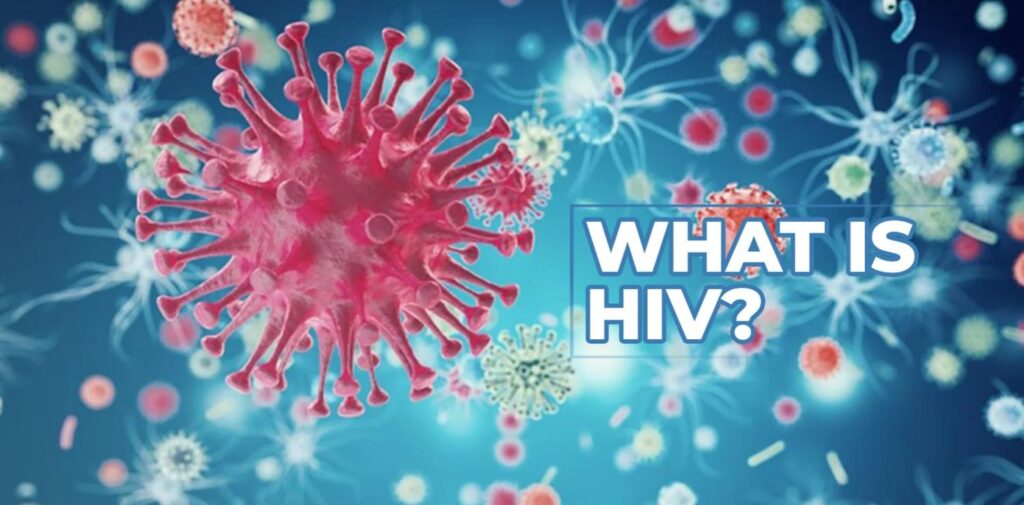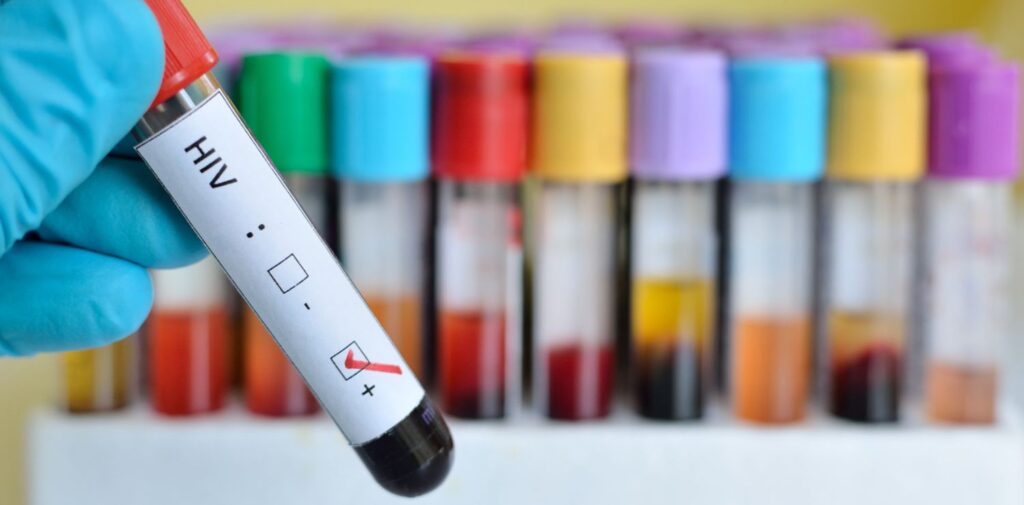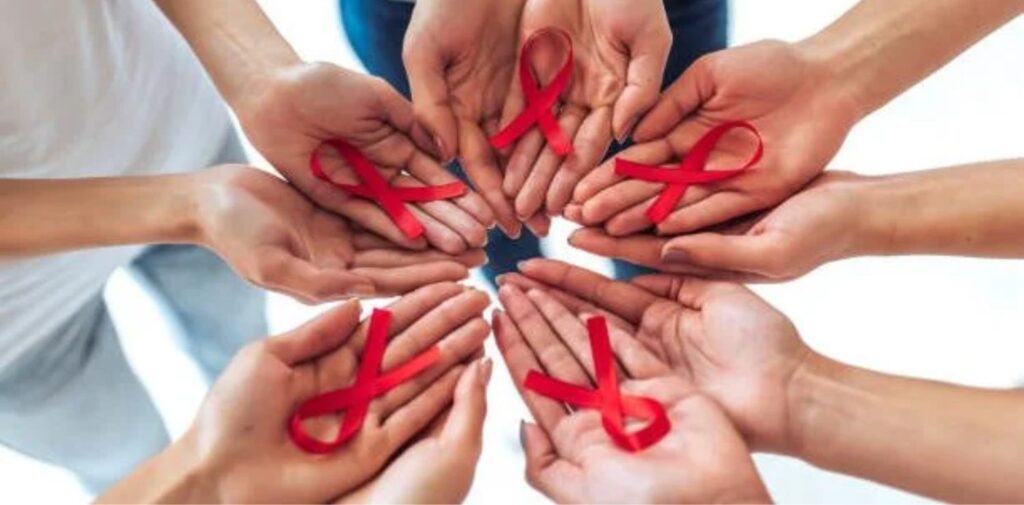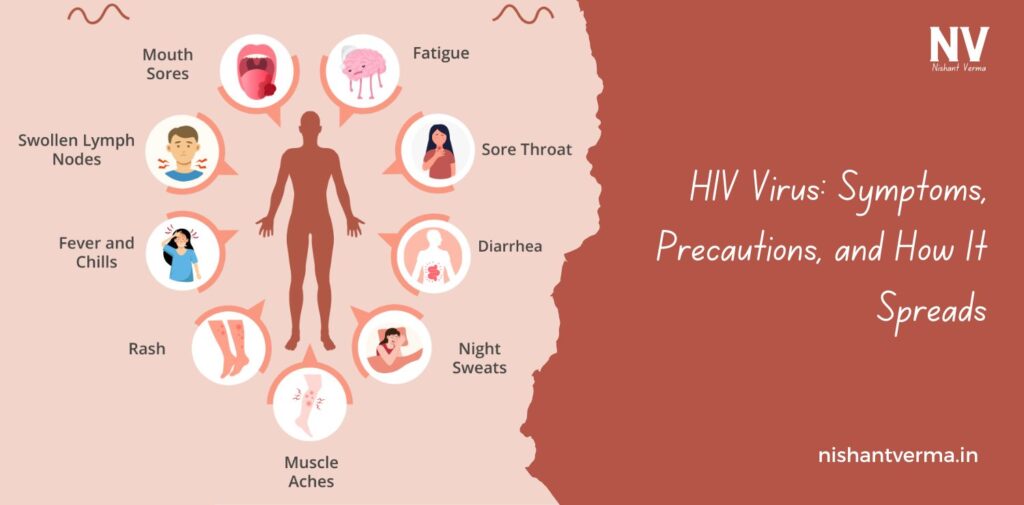Human Immunodeficiency Virus (HIV) is a virus that attacks the body’s immune system, specifically the immune cells known as T-cells or CD4 cells. The immune system is responsible for defending the body against infections, and when HIV weakens this system, the body becomes more vulnerable to diseases.
Although there is no cure for HIV Virus yet, with proper medical treatment and care, people living with HIV can lead long, healthy lives. In this article, we will explore everything you need to know about HIV, including its symptoms, how it spreads, and the precautions you can take to protect yourself.
What is HIV?
HIV (Human Immunodeficiency Virus) is a virus that targets the body’s immune system. It attacks and destroys white blood cells called CD4 cells, which are important in fighting infections. Over time, if HIV is not treated, it can severely damage the immune system, leading to acquired immunodeficiency syndrome (AIDS).
- HIV vs. AIDS: HIV is the virus that causes the disease, and AIDS is the last stage of HIV infection. Not everyone who has HIV will develop AIDS, especially if they take antiretroviral therapy (ART), a treatment that helps control the virus and prevent it from advancing to AIDS.

How is HIV Spread?
HIV spreads when an infected person’s blood, semen, vaginal fluids, rectal fluids, or breast milk comes into contact with the mucous membranes in the body, such as those in the genitals, rectum, or mouth. This means that HIV can spread in the following ways:
- Unprotected Sex: Having vaginal, anal, or oral sex without a condom with someone who has HIV can put you at risk of getting the virus.
- Sharing Needles: People who inject drugs and share needles with others can also be at high risk of HIV. The virus can spread through blood when needles are shared.
- From Mother to Child: An HIV-positive mother can pass the virus to her child during pregnancy, childbirth, or breastfeeding.
- Blood Transfusions: In the past, HIV could be transmitted through contaminated blood products, but today, blood transfusions are carefully tested for HIV.
- Infected Body Fluids: While HIV can be transmitted through blood, semen, vaginal fluids, and breast milk, it is not spread by casual contact. It cannot be passed through touching, hugging, kissing, or sharing food and drinks.
Symptoms of HIV Infection
The symptoms of HIV can vary, depending on the stage of the infection. It is important to know the signs to help identify the infection early, as early detection and treatment can help control the virus.
Stage 1: Acute HIV Infection (2-4 Weeks After Exposure)
This stage is also called the “acute retroviral syndrome” (ARS), or primary HIV infection. Many people experience flu-like symptoms, which can last for several days to weeks. These symptoms may include:
- Fever
- Fatigue
- Headaches
- Muscle and joint aches
- Sore throat
- Swollen lymph nodes
- Rash
At this point, HIV is rapidly multiplying, and the virus can be detected in blood tests. However, many people do not realize they have HIV because these symptoms are similar to the flu or a cold.

Stage 2: Clinical Latency (Chronic HIV Infection)
After the initial symptoms subside, the virus moves into a stage known as clinical latency, or chronic HIV. During this period, the virus is still active but reproduces at very low levels. This phase can last for several years if the person is receiving treatment (ART). People in this stage may not have any symptoms or may only experience mild ones. Without treatment, however, the virus can gradually damage the immune system.
Stage 3: Acquired Immunodeficiency Syndrome (AIDS)
If left untreated, HIV can progress to AIDS, the most severe stage of the infection. People with AIDS have a very weakened immune system, which makes them vulnerable to opportunistic infections (infections that take advantage of a weakened immune system). Common symptoms at this stage may include:
- Rapid weight loss
- Recurring fever or profuse night sweats
- Extreme tiredness or fatigue
- Unexplained swollen lymph glands
- Diarrhea that lasts for several weeks
- Sores in the mouth, anus, or genitals
- Pneumonia or frequent infections
- Memory loss, depression, and other neurologic disorders
AIDS is the final stage of HIV, and without proper treatment, it can be fatal. However, with ART, people living with HIV can live long lives and avoid progressing to AIDS.
Precautions to Prevent HIV
While there is no cure for HIV, there are many ways to protect yourself and reduce the risk of contracting the virus. Here are some important precautions:
- Use Condoms: Condoms (both male and female) are one of the most effective methods of preventing HIV transmission during sexual activity. They provide a barrier that prevents fluids from being exchanged during sex, reducing the risk of HIV and other sexually transmitted infections (STIs).
- Get Tested: The only way to know if you have HIV is to get tested. HIV testing is simple and can be done at clinics, hospitals, or even at home with a home testing kit. Regular testing is important, especially if you are sexually active or engage in behaviors that put you at risk.
- Limit Sexual Partners: The fewer sexual partners you have, the lower the risk of being exposed to HIV. Be open and honest with your partners about HIV and sexual health. It’s important to talk about safer sex practices, including the use of condoms and other protection methods.
- Take Pre-Exposure Prophylaxis (PrEP): PrEP is a daily medication for HIV-negative people that can significantly reduce the risk of contracting HIV. It’s especially recommended for people who are at higher risk of HIV, such as those who have HIV-positive partners or engage in high-risk sexual behavior.
- Post-Exposure Prophylaxis (PEP): If you believe you have been exposed to HIV, PEP can be taken within 72 hours to prevent the virus from taking hold. This treatment involves taking HIV medicines for a month, but it must be started soon after exposure for it to be effective.
- Get Treated for Other STIs: If you have other sexually transmitted infections (STIs), it can increase the risk of contracting or spreading HIV. STIs can make the lining of your genitals or rectum more vulnerable to infection, so it’s important to get tested and treated for other STIs.
- Don’t Share Needles: Never share needles or other drug-injection equipment. HIV can be transmitted through sharing needles, so if you use needles for any purpose, it’s important to use clean, new needles every time.
- Get Regular Check-ups: People living with HIV should take antiretroviral therapy (ART) regularly to suppress the virus and keep their immune system healthy. Regular medical check-ups and monitoring are important to manage the virus and prevent complications.

How to Support People with HIV
Living with HIV can be challenging, not only physically but emotionally as well. Stigma and discrimination are some of the biggest hurdles for people with HIV, and it is essential to support and encourage them.
- Offer emotional support: Be understanding and compassionate toward people with HIV. They may face discrimination or social isolation, and your support can make a big difference.
- Encourage testing: If you know someone who may be at risk for HIV, encourage them to get tested. Early detection can save lives.
- Help fight stigma: Stand up against any form of discrimination towards people with HIV. Educate yourself and others to reduce the stigma surrounding the virus.
Conclusion: HIV Virus
HIV is a serious virus that affects millions of people worldwide, but with knowledge, awareness, and proper precautions, it can be managed. Understanding how HIV spreads, its symptoms, and how to protect yourself can go a long way in preventing its transmission. By spreading awareness, supporting those living with HIV, and encouraging safe practices, we can all help fight the HIV epidemic and work toward a future where fewer people are affected by this virus.
The fight against HIV is ongoing, but through collective efforts, education, and treatment, we can make a difference in the lives of millions.




